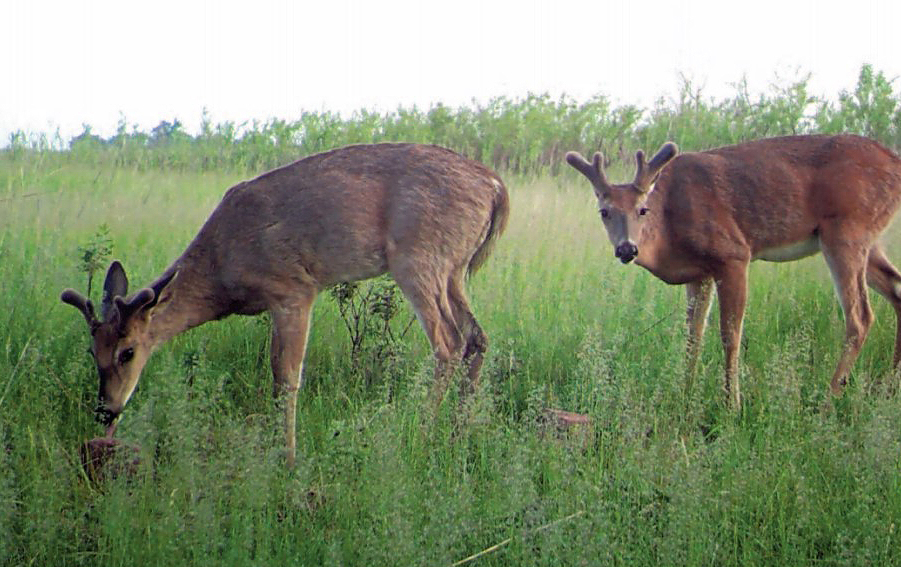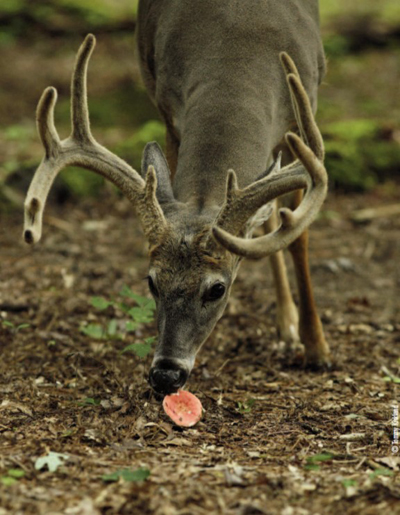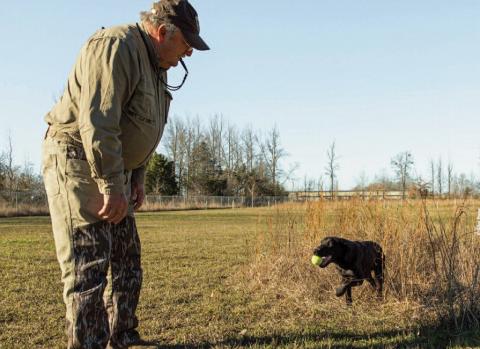Increase Health and Antler Growth with Bio-Available Minerals
Tim Newman | Originally published in GameKeepers: Farming for Wildlife Magazine. To subscribe, click here.

Educated land managers tend to plant a variety of food plots in order to provide high quality nutrition to their herd. However, what many hunters fail to realize is that food plot plants cannot provide all the macro and micro minerals deer require for premium antler growth. The best managers take the time to improve their property by adding mineral sites, which ensures deer have access to everything they need to be healthy, which will lead to better antlers.
The problem is that many of the “deer minerals” on the market today are mostly comprised of salt. This is because it is inexpensive and is a great attractant during the growing season. Most hunters do not understand there is a difference between attraction and nutrition. Just because deer often visit an area does not mean they are getting everything they need in terms of nutrients. Minerals by themselves are not readily consumed, therefore some salt is necessary to increase mineral intake. Ideal salt percentage for balancing intake with mineral content is between 25 and 35 percent.
Another factor to consider when it comes to choosing a mineral for your deer is the “bio-availability.” What good does a mineral do if only 30% of it is absorbed by the deer? The best minerals on the market use a process called “chelation” which binds a protein to the mineral. The gut recognizes the protein more easily than the mineral alone, so absorption increases significantly.
So how do we know which minerals wild deer really need, or how much? The answer is very complex, mainly because the availability of nutrients varies drastically across the whitetail’s range. Researchers know that calcium and phosphorus are important for antlers because that is what antlers are mainly comprised of.
Veterinarians at Ani-Logics Outdoors used liver samples of free-ranging deer to determine that even in the most fertile soil regions, like that of the Midwest, deer were deficient in at least one mineral category. What is surprising is that most bucks were not deficient in Calcium or Phosphorus. They were actually deficient in the micro minerals such as Zinc, Copper, Manganese, and Selenium. Even in places where it seems like deer have access to all the nutrition possible, they are always missing something. Even in southern Iowa the samples showed deficiencies in at least 2 micro mineral categories.

Just like testing soil for fertilizer needs, plants themselves can also be tested to determine what minerals they contain. Let’s take a look at clover, which is one of the most widely used plants for food plots. Deer require at least 15 parts per million (ppm) Copper and most clover varieties provide 3-6 ppm. Will your deer pick up the rest from natural browse? The only way to find out is to have a veterinarian test the liver of a harvested deer and analyze circulating mineral content.
The easier route would be to place a high quality mineral on the ground next to your food plot site. Although we tend to think that deer can get all they need from plants, research tells us otherwise. Products like Mineral Dirt 180 and the Ani-Block from Ani-Logics Outdoors, both contain the right amount of minerals deer require.
Creating new mineral sites can be especially exciting when you have a fresh piece of ground to investigate. It’s enjoyable to see what deer are living in the area and imagine their potential. Refreshing old mineral sites or creating new ones is also a great family and “kid-friendly” management activity. It doesn’t require any heavy or specialized equipment, there are no long hours or backbreaking activity required and it can be a great way to teach kids some woodsmanship and why whitetails use mineral licks.
How do you establish a “productive” mineral site? It may seem as simple as dumping your mineral in a depression you’ve dug-up with your boot, or throwing a BioRock out on the edge of a food plot. These scenarios will work to a degree, but you may want to put a little more thought and effort into it to make sure your animals get the most out of them and the most out of everything they consume.
If you have an established BioRock site, it’s the perfect place to also include some Mineral Dirt 180 or Ani-Block. This should also be a perfect place for recording an inventory on the bucks in that area later on during the summer.

mushroom, but may not be able to absorb or utilize them
efficiently unless they have the required amount of other
essential micro and macronutrients necessary for proper
metabolism.
As with other hunting related tactics, studying an aerial map of the property will be helpful in deciphering how many mineral locations are necessary and exactly where you should put them. As a general rule, one mineral site is needed for every 80-100 acres of land. If you have a high deer density you should probably increase that rate.
Whitetails, like people, have different personalities and habits. Some deer don’t mind visiting and using a mineral site that a number of other deer are utilizing. On the other hand, sometimes certain older bucks shy away from mineral licks that a large number of other deer are constantly using. Possibly they feel this exposes them to unnecessary danger or extra attention brought on by the inexperienced younger deer. It’s no different than why mature bucks often eat alone in a food plot or why they have their own trails and access points to fields and cover. For this reason you may want to create a separate site back in the thick cover for the older bucks. Use your camera intelligence to learn if they’re working.
A favorite way of many to establish a mineral site is to look for a semi-rotted tree stump, preferably one of a hardwood. Ideally, the top of the stump has a hole or a good place to wedge the rock so that it cannot be pushed off when deer use it. If the stump has a relatively flat top, use a hatchet to create a depression or split the stump somewhat to wedge the rock in to hold it. Partially rotten stumps make great locations for mineral licks for a couple reasons. As rainfall slowly melts the minerals over time, they leach into the stump as well as the surrounding root system. Deer love to paw and chew at the mineral soaked wood and will eventually wear it completely down or entirely dig up the stump.
Depending on rainfall and deer utilization, you may need to refresh your mineral site three times or more during the spring, summer and early fall. It is especially important to have some available from the very early spring during the first stages of antler genesis through hard antler in the fall. Keep in mind, if you use Ani-Logics, besides helping your bucks grow bigger antlers you’re improving the overall health of the herd and facilitating the utilization of the nutrients they take in from all their foods more efficiently.































